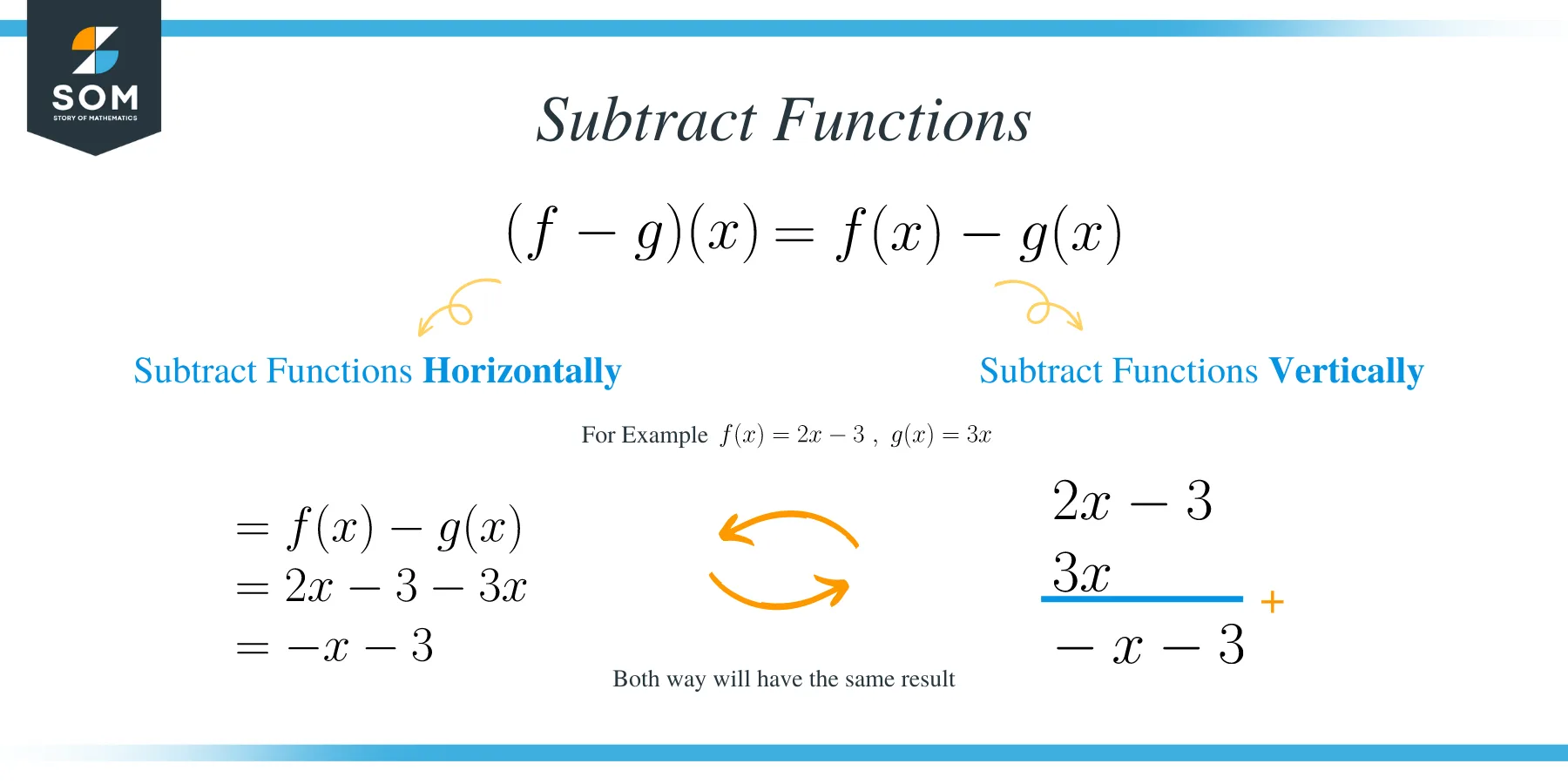- Home
- >
- Arithmetic Operations on Functions – Explanation & Examples
JUMP TO TOPIC
Arithmetic Operations on Functions – Explanation & Examples
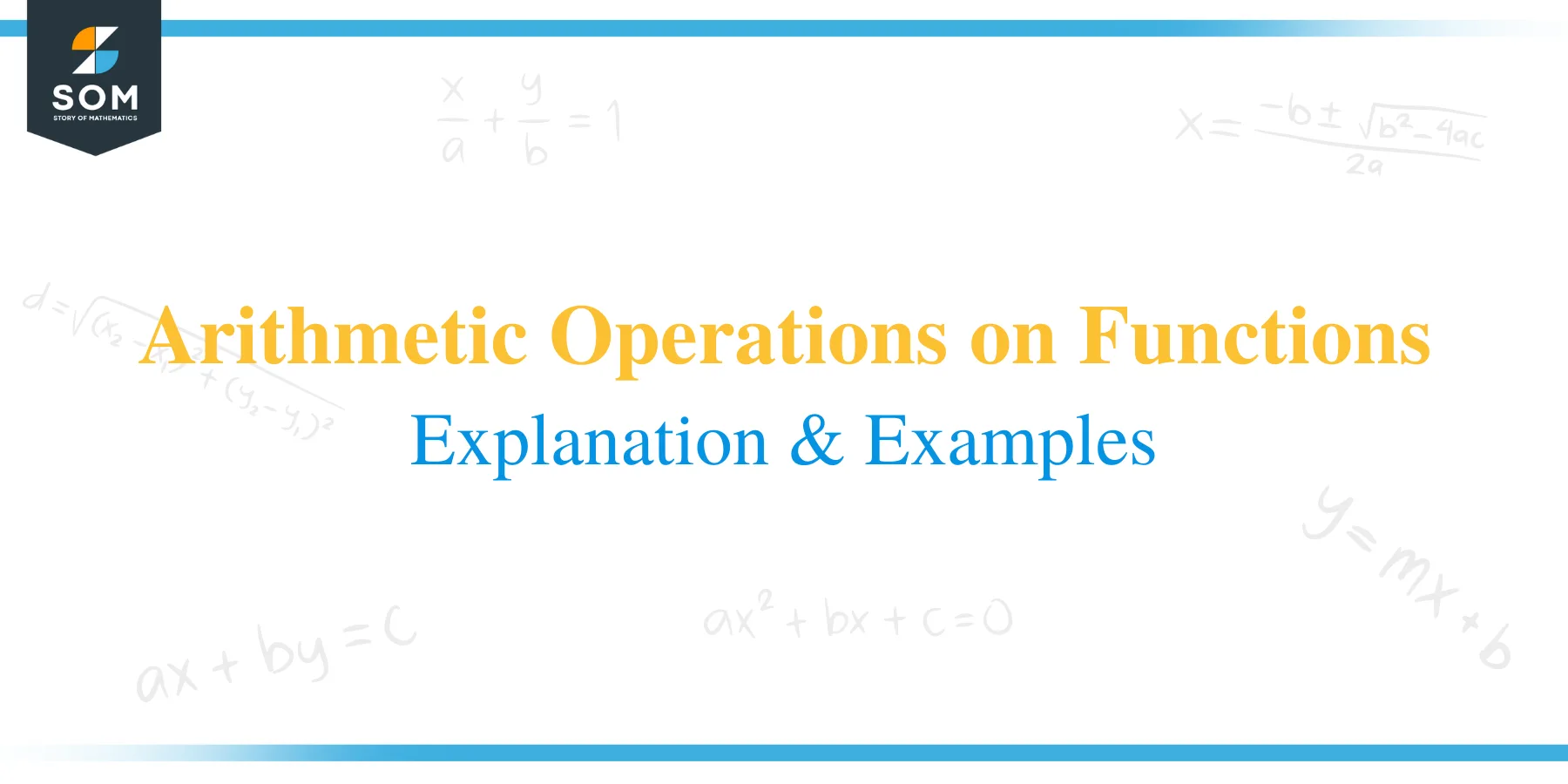 We are used to performing the four basic arithmetic operations with integers and polynomials, i.e., addition, subtraction, multiplication, and division.
We are used to performing the four basic arithmetic operations with integers and polynomials, i.e., addition, subtraction, multiplication, and division.
Like polynomials and integers, functions can also be added, subtracted, multiplied, and divided by following the same rules and steps. Although function notation will look different at first, you will still arrive at the correct answer.
In this article, we will learn how to add, subtract, multiply and divide two or more functions.
Before we begin, let’s familiarize ourselves with the following concepts and rules of arithmetic operation:
- Associative property: This is an arithmetic operation that gives similar results regardless of the grouping of the quantities.
- Commutative property: This is a binary operation in which reversing the operands’ order does not alter the final result.
- Product: The product of two or more quantities is the result of multiplying the quantities.
- Quotient: This is the result of dividing one quantity by another.
- Sum: The sum is the total or the result of adding together two or more quantities.
- Difference: The difference is the result of subtracting one quantity from another.
- The addition of two negative numbers yields a negative number; a positive and negative number yields a number similar to the number with a larger magnitude.
- Subtraction of a positive number gives the same result as adding a negative number of equal magnitude while subtracting a negative number yields the same result as adding a positive number.
- The product of a negative and a positive number is negative, and negative numbers are positive.
- The quotient of a positive and a negative is negative, and the quotient of two negative numbers is positive.
How to Add Functions?
To add functions, we collect the like terms and add them together. Variables are added by taking the sum of their coefficients.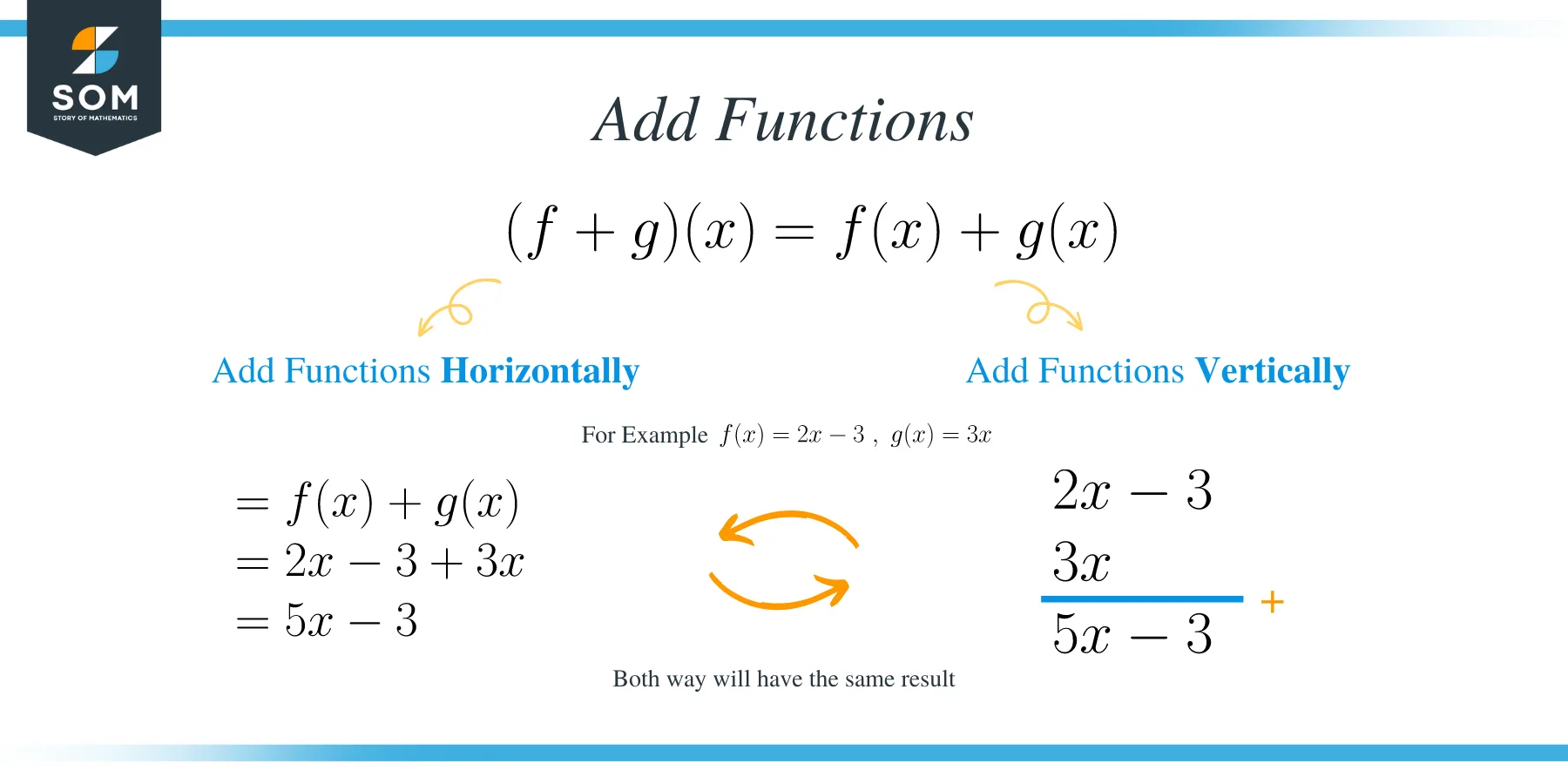
There are two methods of adding functions. These are:
Horizontal method
To add functions using this method, arrange the functions added in a horizontal line and collect all the groups of like terms, then add.
Example 1
Add f(x) = x + 2 and g(x) = 5x – 6
Solution
(f + g) (x) = f(x) + g(x)
= (x + 2) + (5x – 6)
= 6x – 4
Example 2
Add the following functions: f(x) = 3x2 – 4x + 8 and g(x) = 5x + 6
Solution
⟹ (f + g) (x) = (3x2 – 4x + 8) + (5x + 6)
Collect the like terms
= 3x2 + (- 4x + 5x) + (8 + 6)
= 3x2 + x + 14
Vertical or column method
In this method, the elements of the functions are arranged in columns and then added.
Example 3
Add the following functions: f(x) = 5x² + 7x – 6, g(x) =3x²+ 4x and h(x) = 9x²– 9x + 2
Solution
5x² + 7x – 6
+ 3x² + 4x
+ 9x² – 9x + 2
16x2 + 2x – 4
Therefore, (f + g + h) (x) = 16x2 + 2x – 4
How to Subtract Functions?
To subtract functions, here are the steps:
- Enclose the subtracting or the second function in parentheses and place a minus sign in front of the parentheses.
- Now, remove the parentheses by changing the operators: change – to + and vice versa.
- Collect the like terms and add.

Example 4
Subtract the function g(x) = 5x – 6 from f(x) = x + 2
Solution
(f – g) (x) = f(x) – g(x)
Place the second function in parentheses.
= x + 2 – (5x – 6)
Remove the parentheses by changing the sign within the parentheses.
= x + 2 – 5x + 6
Combine like terms
= x – 5x + 2 + 6
= –4x + 8
Example 5
Subtract f(x) = 3x² – 6x – 4 from g(x) = – 2x² + x + 5
Solution
(g -f) (x) = g(x) -f(x) = – 2x² + x + 5 – (3x² – 6x – 4)
Remove the parentheses and change the operators
= – 2x² + x + 5 – 3x² + 6x + 4
Collect like terms
= -2x² – 3x² + x + 6x + 5 + 4
= -5x2 + 7x + 9
How to Multiply Functions?
To multiply variables between two or more functions, multiply their coefficients and then add the variables’ exponents.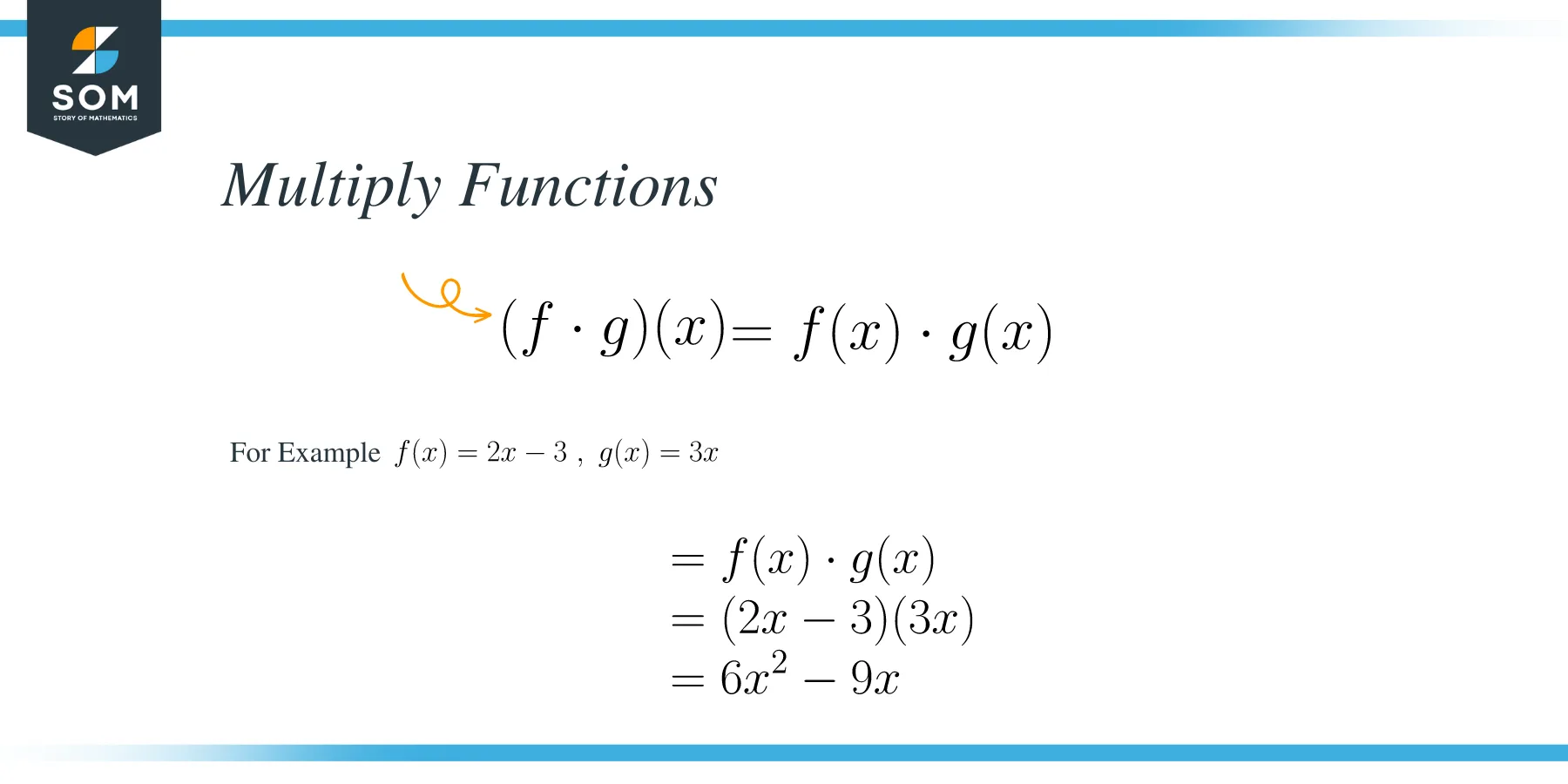
Example 6
Multiply f(x) = 2x + 1 by g(x)= 3x2 − x + 4
Solution
Apply the distributive property
⟹ (f *g) (x) = f(x) * g(x) = 2x (3x2 − x + 4) + 1(3x2 – x + 4)
⟹ (6x3 − 2x2 + 8x) + (3x2 – x + 4)
Combine and add like terms.
⟹ 6x3 + (−2x2 + 3x2) + (8x − x) + 4
= 6x3 + x2 + 7x + 4
Example 7
Add f(x) = x + 2 and g(x) = 5x – 6
Solution
⟹ (f * g) (x) = f(x) * g(x)
= (x + 2) (5x – 6)
= 5x2 + 4x – 12
Example 8
Find the product of f(x) = x – 3 and g(x) = 2x – 9
Solution
Apply FOIL method
(f * g) (x) = f(x) * g(x) = (x – 3) (2x – 9)
Product of first terms.
= (x) * (2x) = 2x 2
Product of outermost terms.
= (x) *(–9) = –9x
Product of the inner terms.
= (–3) * (2x) = –6x
Product of last terms
= (–3) * (–9) = 27
Sum the partial products
= 2x 2 – 9x – 6x + 27
= 2x 2 – 15x +27
How to Divide Functions?
Just like polynomials, functions can also be divided using synthetic or long division methods.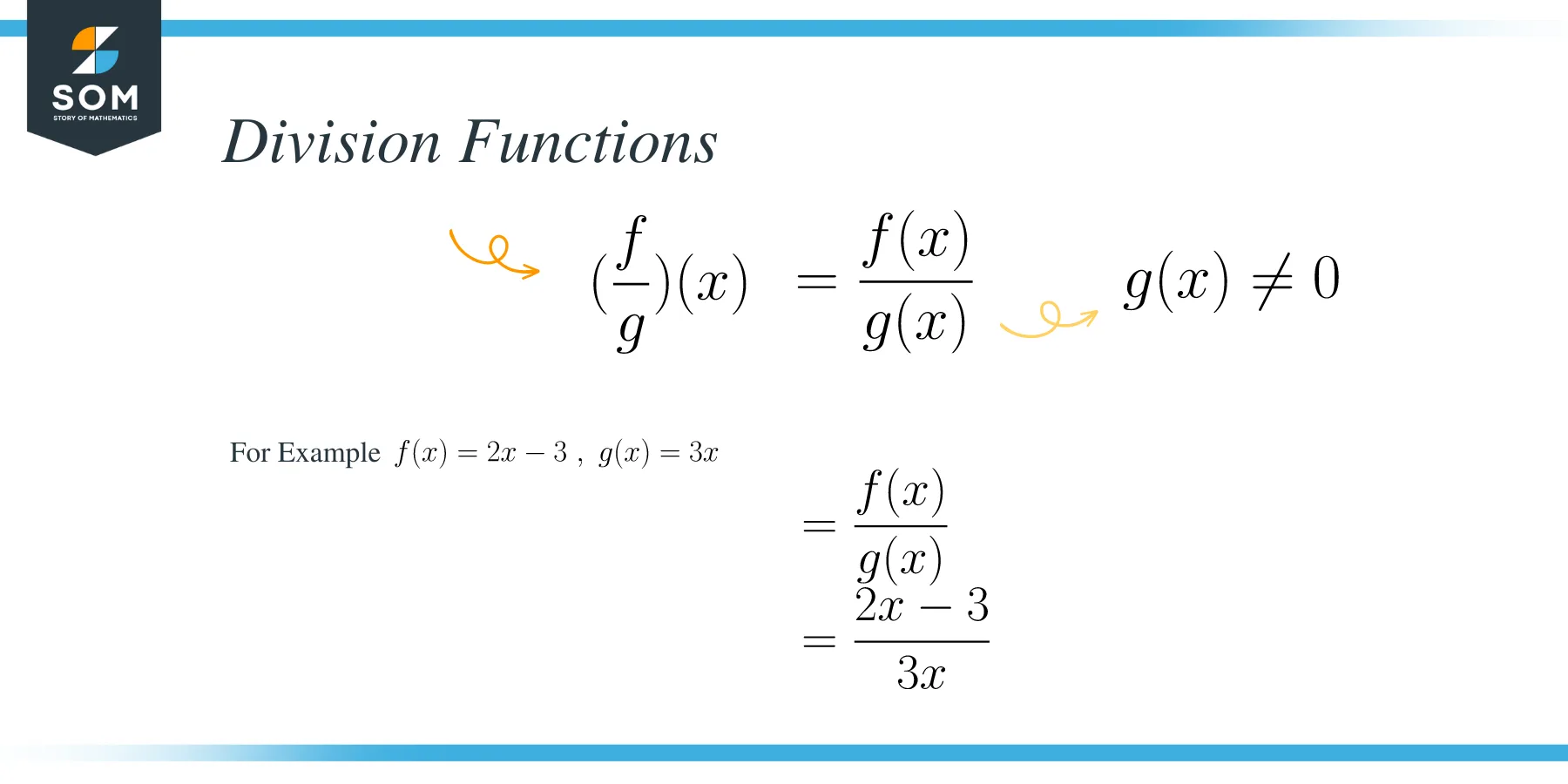
Example 9
Divide the functions f(x) = 6x5 + 18x4 – 3x2 by g(x) = 3x2
Solution
⟹ (f ÷ g) (x) = f(x) ÷ g(x) = (6x5 + 18x4 – 3x2) ÷ (3x2)
⟹ 6x5/ 3x2 + 18x4/3x2 – 3x2/3x2
= 2x3 + 6x2 – 1.
Example 10
Divide the functions f(x) = x3 + 5x2 -2x – 24 by g(x) = x – 2
Solution
Synthetic division:
(f ÷ g) (x) = f(x) ÷ g(x) = (x3 + 5x2 -2x – 24) ÷ (x – 2)
- Change the sign of constant in the second function from -2 to 2 and drop it down.
_____________________
x – 2 | x ³ + 5x² – 2x – 24
2 | 1 5 -2 -24
- Also, bring down the leading coefficient. This means that 1 be the first number of the quotient.
2 | 1 5 -2 -24
________________________
1
- Multiply 2 by 1 and add 5 to the product to get 7. Now bring 7 down.
2 | 1 5 -2 -24
2
________________________
1 7
- Multiply 2 by 7 and add – 2 to the product to get 12. Bring 12 down
2 | 1 5 -2 -24
2 14
__________________________
1 7 12
- Finally, multiply 2 by 12 and add -24 to the result to get 0.
2 | 1 5 -2 -24
2 14 24
__________________________
1 7 12 0
Hence, f(x) ÷ g(x) = x² + 7x + 12

